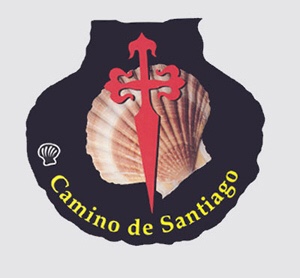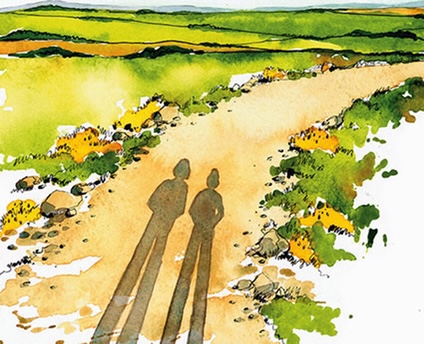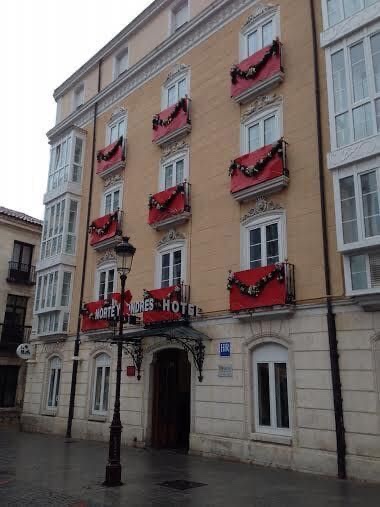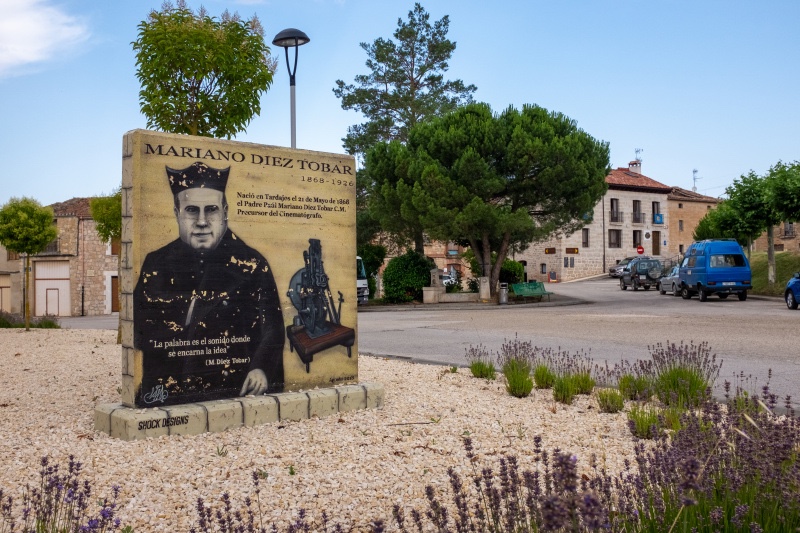
his strength the more is.
No foes shall stay his might,
though he with giants fight;
he will make good his right
to be a pilgrim.” John Bunyan
To Be a Pilgrim,Maddy Prior :- https://youtu.be/EiSxSZ0s0AQ

I have never quite concluded (yet) whether I am a “Pilgrim”,or just an “ inquisitive person”. In the Thesaurus Plus,I found that the two descriptions are semantically related,mutual synonyms almost. You can find over 250 synonyms for Pilgrim – my favourites are “ mendicant”,” sojourner”,” wayfarer” and my all time best- “ saunterer”,one who walks on holy ground. There are not so many for “ inquisitive person” but I liked “ voyager”,” trailblazer” and “pathfinder”. Of course there are less flattering descriptions such as “ meddler” and “nosey parker”. For Pilgrim you can be seen as a “ gallivanter” or “ gadabout”.
The Camino has provided its own Lexicon too. We have “ Bicigrinos “ who favour bikes and “ Turigrinos’ who favour dipping in and out of the Caminos often by coach,or those who walk short stages unencumbered. We have our own description- ” Camigas” – Spanglish for “ friends on the Camino”


Our second stage is dominated by crossing the Meseta.

The word ‘Meseta’ means plateau in Spanish. So, the Meseta of Spain is a plateau of the Iberian Peninsula, also known as the Meseta Central. The western slope of this plateau is inclined towards the Atlantic Ocean and forms the basins of the rivers Duero, Tagus and Guadiana. The plateau rises into the Cantabrian Mountains to the north and it becomes a series of ranges towards the east. La Mancha occupies the southeastern section of the Meseta Central. In the northeast, a certain symmetry is formed by the tectonic troughs of the Ebro and in the south by the Guadalquivir.The central part of the peninsula divides the Meseta Central into two divisions, Castile-Leon, the high basin of the northern Meseta and the Castile-La Mancha and Extremadura in the lower plateaus of the southern Meseta.

B. I should be focussing mainly but not exclusively on the places we shall be stopping over en route,but to also look into to those places that we merely traverse on our itinerary.

FOR REFERENCE I SHALL BE USING THE FOLLOWING BOOKS
THE CAMINO FRANCES – The Pilgrim Guide – A Wise Pilgrim Guide WP
CAMINO DE SANTIAGO – Camino Frances by John Brierley JB
CAMINO DE SANTIAGO – by Sergi Ranis SR
15th May 2023 and the return to Burgos, a major city on the Frances.
MOON – CAMINO DE SANTIAGO by Beebe Balhranin. BB
WP. JB. SR. BB. Are shorthand for reference points in the following narratives.

HISTORY
Burgos was originally founded at the end of the 9th century in a bid to repopulate these northern plains. From the expulsions of the Muslims (around the end of the 11th century) it quickly became one of Castilla’s most important city. It was here that the Catholic Kings Isabel and Ferdinand welcomed home Christopher Columbus after his second voyage to the new world, and it was here where General Francisco Franco was publicly proclaimed as Generalísimo in 1936 and which would serve as the dictators base of operations until the end of the civil war.
Set along the wonderful río Arlanzon, the city was built with massive walls and even more massive gates. In spite of this, the territory of Burgos (but more to the point Castilla) was widely disputed. The seed for much of the fighting was the will of King Fernando-I, who although wise enough to rule over the northern regions, was not too clever in managing his estate. He chose to divide the north into three regions upon his death, with each region going to a different heir.
Alfonso VI received León, García received Galicia, Sancho II received Castilla, and his daughter Urracareceived the city of Zamora.
More land disputes followed and in the end it was Alfonso that reigned over the whole territory and was crowned the emperor of the Iberian Peninsula. This was at the end of 11th century, and the wealth collected by Alfonso from tariffs throughout the peninsula was transformed into palaces and a Cathedral, catapulting Burgos into prosperity.
Burgos is also the home of El Cid, a fierce warrior, and cunning politician. He was banished from the city by King Alfonso for having forced him to take an oath attesting to his innocence in the death of his brother Sancho. El Cid would eventually turn down an invitation to return and fight for Alfonso, and instead traveled east to Valencia where he maneuvered himself into a kingdom of his own. He is now buried in the Cathedral.
The Hotel Norte y Londres ** is in the heart of Burgos, in the pedestrian plaza de Alonso Martínez, just 150 meters from the Cathedral, the statue of El Cid and the shopping and tapas area. This is our starting point for the second stage of our Camino. It is featured in Brierley’s guidebook, P.131. Eleven minute walk from the bus station .

LEAVING BURGOS
THE ROAD
The road out of Burgos is, thankfully, much shorter than the road in. The camino from here enters the meseta, with its endless plains of wheat. The landscape, while seemingly unremarkable, offers a wealth of flora and fauna and opportunities for peaceful contemplation. Do not underestimate it, for this is where the second third of the camino begins, the part of the camino which tones your mind . Once at the far end of Burgos be wary of misleading signs (some quite official looking) that point the way to Villabilla. That town has been severed from camino traffic by the construction of a rail track and some efforts have been made to surreptitiously reconnect it. WP The Practical Path – We leave behind the built environment and enter the relative wilderness of the sublime Meseta JB Go down to the Gate Hospital del Rey,leaving the old walled quarters of the city behind. Eventually crossing the river Arlanzon and onwards along the valley SR.PS . In a little over 10 KM we come to Tardajos – Cafe bar Ruiz recommended BB.
TARDAJOS.

Passing through Tardajos, along the shortest path possible, the average pilgrim would be forgiven for overlooking its historical significance.
In fact, Tardajos lies at the intersection of the two primary and ancient trade routes that bisected this land. It was once a walled city and had three magnificent churches. Only one, the Iglesia de Santa María, remains.
Tardajos, like Rabé de las Calzada (ahead), also had a castle on a hill.
THE ROAD
The camino departs from the main road in Tardajos and from here you won’t return to anything resembling a busy road until Frómista, do not be tempted to keep on the main road but rather cross the street and pass through the village. WP
Passing through Rabe de las Calzadas ( once the junction of two Roman roads) a stamp may be obtained in the Iglesia de Santa Marina. BB. The Fuente de Prao Torre – a picnic area whose fountain may be dry? Pedras Sagradas 4KM on are mounds and cairns built by passing pilgrims from the local stark-white fieldstones.BB The Camino continues stretching to the horizon to a high point on the Meseta before descending steeply down the aptly named Mule-Killer Slope Cuesta Matamulas.JB

Hornillos de Camino

Hornillos is one of the best examples of a “Royal” camino road: in this case one long street (the aptly named calle real) stretched out along the camino. This layout allowed every building to face the camino, a trait which reminds us that the current heavy development along the camino is anything but a new phenomenon. The town once belonged to the monastery of St. Denis and was home to a Benedictine community.
Folklore places Charlemagne here too, baking bread for his troops along the river.
Ruins and medieval bridges are the only visible remains.WP The name Hornillos derives from kiln or oven – the diminutive “ illos “ suggesting a small stove. A peaceful place JB A gentle climb follows climbing back up to the Meseta. Further on lies the classic pilgrim town of Hontanas which appears almost by surprise as it lies in a hollow and is therefore not visible until you are practically on top of it…and our accommodation for the night.


And so ends day one of our second stage.
THE TRAVELLING WILBURYS – The End of the Linehttps://music.youtube.com/watch?v=stxftCSiVBc&feature=share. “Well it’s all right, riding around in the breeze
Well it’s all right if you live the life you please
Well it’s all right, doing the best you can
Well it’s all right, as long as you lend a hand”.
